My favorite coastal hike in South Sydney is the incredibly varied Henry Head and Cape Banks loop walk. Tucked away in La Perouse, it’s a lesser-known gem in Kamay Botany Bay National Park (sorry, Cape Bailey, I still love you), offering a fantastic mix of scenery without the crowds. Just kidding. Australia isn’t crowded – I know, Aussies would argue. But I think if you’ve never been swept through Charles Bridge in Prague, you can’t argue about crowds.
Anyway, my point is: this walk is peaceful and pretty! It has fabulous coastal vistas, surprisingly sheltered beaches perfect for a pause, bright eucalyptus woodland alive with birdsong, dense coastal heath, dramatic rock platforms, and historic bunkers.
Henry Head & Cape Banks loop walk: the details
- Trailhead: car parks along Cape Banks Road, La Perouse (plenty of options)
- Length: ~5.8 km loop
- Difficulty: easy (barely any elevation change, mostly gentle undulations)
- See the Henry Head & Cape Banks walk on a map here.
What to expect on the trail
One of the first things you’ll appreciate about this track is its relatively gentle terrain – a welcome change from the steep climbs common on many Sydney coastal walks. Setting off from Cape Banks Road, you’ll quickly find yourself in coastal bushland, then at the junction towards Browns Rock.
Browns Rock
This is a side trip that’s totally worth adding to the loop: it’s yet another amazing coastal lookout. It’s only a few hundred metres each way down to the rock platform, but it’s all uphill on the way back!
Henry Head
Back on the main loop, continue towards Henry Head. The path guides you past intriguing remnants of Sydney’s coastal defence history – old WWII bunkers (tagged with graffiti, sadly) stand silently amongst the trees. Then the bush opens up, and you’re greeted with your first proper sea views.
Heathland walk & Cruwee Cove
From here, the trail alternates between sections of well-maintained boardwalk and navigating natural rock platforms, but the captivating ocean vista are a constant, along with like the dense, colourful coastal heathland to your left.
You’ll descend into the atmospheric Cruwee Cove, a charming, sandy-pebbly beach, with a small creek trickling towards the ocean across the sand and, after rain, a potential small cascade tumbling down the rocks behind the beach.
Cape Banks
Push onwards until you reach the Cape Banks Aquatic Reserve. Prepare for a highlight: cross the bridge and venture onto the rugged ‘island’ of Cape Banks itself!
There’s no defined track here; explore the rocky plateau and find the best lookouts for yourself. Carefully scramble over (and under) the rocks and soak in the panoramic coastal views. This windswept point is also a great location for whale watching during the migration season (roughly May-Nov).
Complete the loop
To make it a loop, rejoin the path closest to the water and follow it for about 800m. It eventually meets the Dharawal Track, which runs alongside the quiet end of Cape Banks Road. It’s a road, not a trail, but it’s surprisingly pleasant (and quiet), lined with bush and filled with birdsong.
Want amazing Sydney family walks without the planning headache?
My ebook features 50 detailed, kid-approved trails with maps, parking, pram info & fun “Play Factor” highlights. PLUS: 130+ nature play ideas & printables to get your family outdoors!
Spend less time searching, more time exploring. Get your instant download!
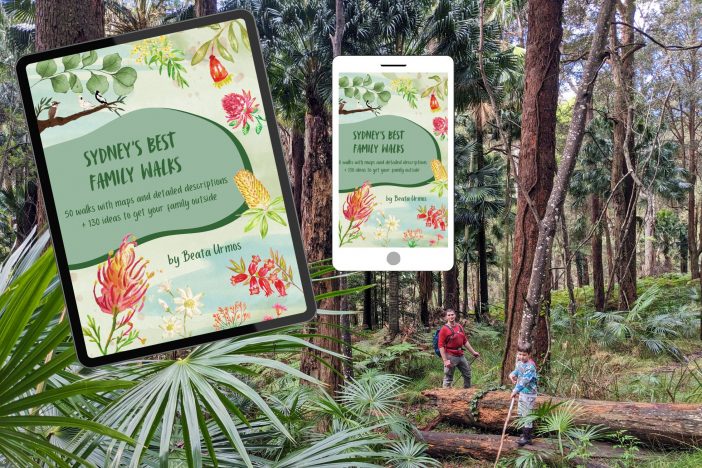
Extend your coastal adventure?
The beauty of this location is the easy connections to other stunning spots. Why not add one of these short extensions?
Extension 1: Congwong Beach & Little Congwong Beach
- Additional distance: ~1.4 km (one-way from the main loop start/end area)
- Map: see the route to the beaches here.
From the main trailhead area, it’s an easy detour to these two beautiful beaches. They feel remote and are sheltered enough for a delightful swim (no lifeguards though!) – my favorite kind. Little Congwong Beach is the small sister of Congwong, and it’s a surprisingly secluded spot.
Extension 2: Congwong Beach & Bare Island
- Additional distance: ~1.4 km (one-way from the main loop start/end area)
- Map: see the route to Bare Island here.
Head past Congwong Beach towards Bare Island. Connected to the mainland by a scenic, 130-year-old wooden bridge, the island is dominated by the historic Bare Island Fort. Built in the 1880s, it was designed to protect Botany Bay during the Second World War.
If you want to explore inside, there are guided tours every Sunday, each tour lasting about 45 minutes. Check the NSW National Parks website for booking details and times.
Keep your eyes open for wildlife!
- Soaring high: majestic White-bellied Sea Eagles.
- Coastal birds: cormorants are often seen fishing or drying their wings on the rocks.
- Whales: from May to November, whales are the stars, but dolphins can sometimes be spotted too.
- Forest birds: listen for the iconic laugh of Kookaburras, the chatter of Lorikeets, and the distinct call of Yellow-tailed Black Cockatoos in the wooded sections.
- Sunbathers: Skinks, Blue-tongue Lizards, and Water Dragons love basking on sunny rocks.
Park entry fees
Great news! Accessing the La Perouse section of Kamay Botany Bay National Park is free. Park entry fees only apply if you visit the Kurnell area on the southern side of the bay.
What to pack for your Henry Head & Cape Banks walk
Being prepared ensures you have the best time exploring this beautiful coastal track. Here’s what we recommend packing:
Footwear: Sturdy closed-toe shoes are essential for the varied terrain.
Sun protection: non-negotiable, even on overcast days!
- High-SPF sunscreen
- Wide-brimmed hat
- sunglasses
Hydration & food: there are no refill points along the track.
- Plenty of water (at least 1-2 litres per person) in a reusable bottle or hydration reservoir.
- High-energy snacks or salad.
Have good quality, responsibly sourced food for the trail
Navigation: phone with downloaded offline maps (reception can be patchy).
Optional extras:
- Binoculars: great for spotting whales (May-Nov) or birds like sea eagles.
- Small first-aid kit: for minor scrapes or blisters.
- Quick-dry towel: if you plan to swim at the Congwong beaches.
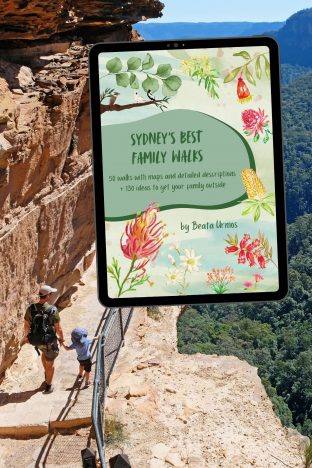
Tired of endless searching for kid-friendly Sydney walks?
Stop the guesswork! My Sydney’s Best Family Walks ebook gives you 50 kid-tested trails with all the details you need: maps, parking, difficulty, pram access, and unique “Play Factor” notes. Plus, get 130+ bonus nature play ideas & printables!
Unlock stress-free family adventures.
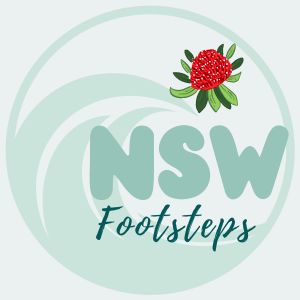












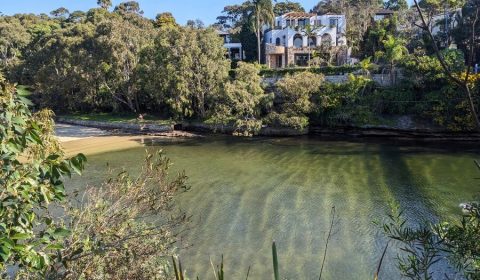
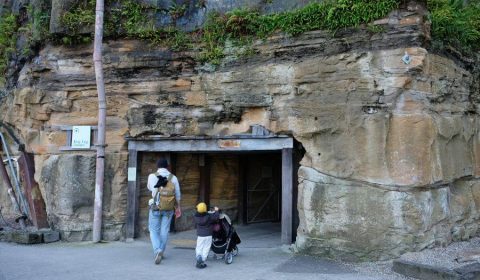
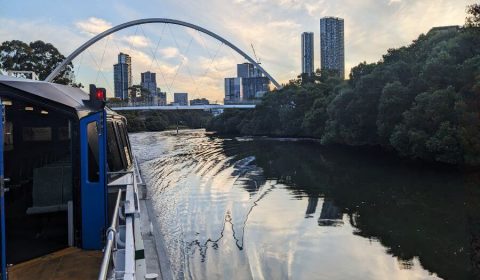
Leave a Reply